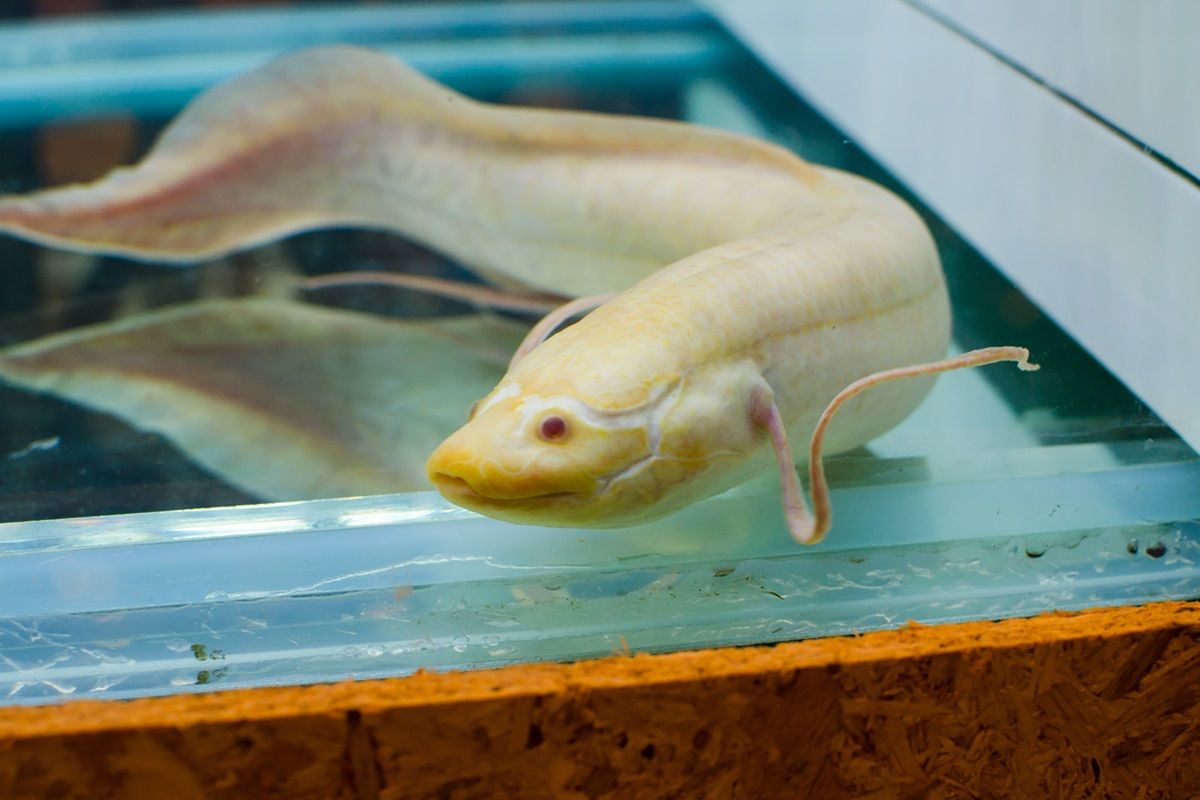
White Albino Lungfish (Protopterus dolloi) (Image by Adobe Stock)
Did you know some fish have lungs?
Ask most people what makes a fish a fish and they will list key traits, such as fins, scales, and perhaps most importantly, the ability to breathe underwater. However, the aptly named lungfish, which look like eels and can grow to be seven feet long, are an ancient class of fish that breathe air just like us.
The earliest ancestors of lungfish emerged around 420 million years ago, when the fish’s swim bladders, air-filled organs that enable fish to regulate their buoyancy in water, evolved into a kind of primitive lung. Scientist think the new organ developed as a way for the lungfish to survive periods of drought in otherwise inhospitable environments. When droughts occur in freshwater environs, most fish are forced into small pools of water that gradually lose their available oxygen. Because of their lungs, though, lungfish simply need to dig themselves into some mud, protect their skin from drying out by lining their burrows with mucus, and breathe deeply.
Lungfish still have gills, but in most of the lungfish species alive today, those gills are atrophied, meaning they are present but don’t do much. The Australian lungfish, however, has a single lung and fully functioning gills, allowing it to get oxygen through both water and air. Because of these links to prior evolutionary stages, scientists think that lungfish are likely a key part of the story of how life transitioned from the water to land. So while these long, eel-like fish might not look like much, they may actually provide a unique perspective into how our earliest ancestors moved out of their watery homes!
Special thanks to Igor Schneider, Louisiana State University, for reviewing today's episode.
Learn more
Sources
A fish with a lung? Lung.org
Lungfish, Britannica
Introduction to Dipnoi, University of California Museum of Paleontology, Berkeley









